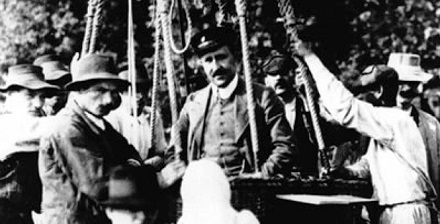URL: https://www.desy.de/school/school_lab/zeuthen_site/cosmic_particles/basics/research/index_eng.html
Breadcrumb Navigation
Research in the Past and Present
Forschung früher und heute
In 1912 Viktor Franz Hess investigated the ionising radiation in the atmosphere. At that time it was assumed that the radiation is caused by natural radioactivity of the earth crust. Therefore, its intensity should decrease with increasing altitude.
Using a balloon filled with hydrogen gas, Hess reached an altitude of 5500m. His measurements showed the opposite, the intensity was increasing at altitudes above 2500m. The only explanation for this behaviour is that the radiation has an extraterrestrial origin. For the discovery of cosmic radiation Viktor Hess received the Nobel Prize in 1936.

Until the 1950s the exploration of the elementary particles was only possible by measuring cosmic particle interactions. Many new particles were discovered and investigated. Then, particle accelerators came into operation which allowed scientists to perform high statistics experiments with defined primary particle types and energies. A large zoo of new particles, their interactions and decay characteristics was gradually discovered. The last highlight was in 2012 when particle physicists at the Large Hadron Collider LHC at CERN made a Noble Prize worthy discovery detecting the Higgs particle.
The enormous progress in experimental and theoretical elementary particle physics of the last decades also resulted in a better understanding of the cosmic particle processes. Today, scientists are trying to find out what kind of sources generate cosmic particles and what mechanisms accelerate them to such extremely high energies. Cosmic particles also help to understand the physical processes happening in our universe during the birth, life and death of stars and galaxies.
To reach these goals, worldwide collaborations of astroparticle physicists have been built and are preparing larger and more sensitive experiments. DESY is participating in experiments like IceCube and IceTop at the South Pole, VERITAS in the US, MAGIC in La Palma and H.E.S.S. in Namibia. It is also playing a major part in preparing the Cherenkov Telescope Array CTA. Other German research groups are involved in the Auger Experiment in Argentina, in the KM3Net experiment prepared for the installation in the Mediterranean as well as in satellite experiments measuring the flux of particles emitted by the Sun or other cosmic sources.


